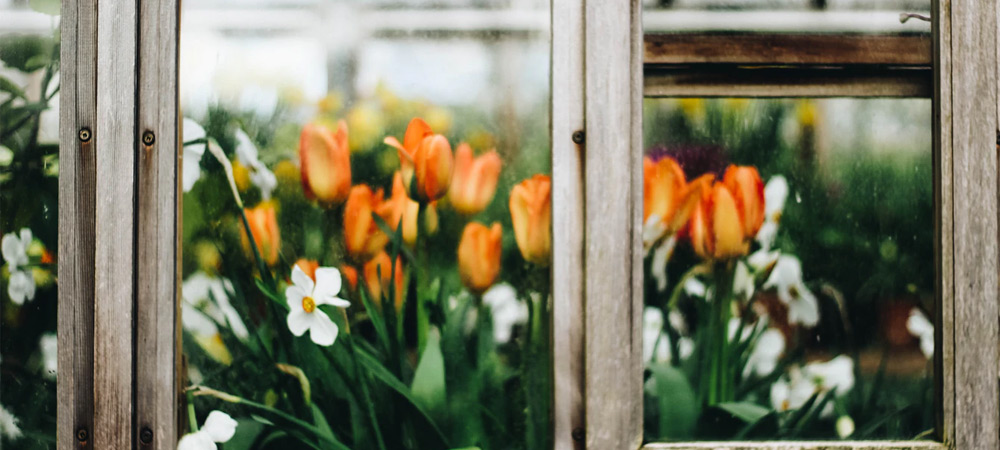Bubble Wrapping Your Greenhouse Pros and Cons

Greenhouses are little havens of sheltered growing in the summer. Beautiful humidity, that earthy vegetable smell, and the light passing through the glass and touching everything inside with that tint of paradise… the science behind it is satisfying too, sunlight travelling all the way to earth to be captured and converted into growth and food, and few places better than in your greenhouse.
But then the winter comes, and that little paradise can seem cold, bleak, and take on the stark colours of a gulag photo… and the romance of it can quickly die. That is, if your greenhouse suffers from the twin problems of no heat and a lack of insulation.
Not everyone has the budget, setup, or even desire to heat a greenhouse through the winter, but that doesn’t mean it has to turn into a dead zone. Insulating a greenhouse can hold in just enough warmth to let your precious plants survive the colder hours and enjoy the warmer ones – and can protect them from the dreaded damage of frost. One of the most popular solutions, especially for gardeners new to greenhouse growing, is the use of bubble wrap. At first glance though, even this can be pretty daunting, and a lot of questions arise. How much do I cover? How thickly? What kind of bubble wrap should I use? Where do I get it?
But do not worry, just as your bubble wrap efforts will help your little plants get through the burden of the colder months, we are here to help you get over any fear or hesitation you may have when it comes to bubble wrapping your green house. Stay with us and you’ll soon be armed with all of the knowledge you need to proceed on this adventure in cold-month greenhouse care.
Need a new greenhouse? checkout the range at South West Greenhouses here
Benefits of Bubble Wrapping a Greenhouse
The purpose of bubble wrap, like any insulation, is to prevent a difference in temperature on one side of a barrier from making it through to the other side. In other words, we want to keep the cold out, and the heat in. By reinforcing the glass barrier with bubble wrap, we help to do this.
But before you start collecting all of the bubble wrap from your Amazon deliveries and Christmas presents, we recommend against using packing bubble wrap, and opt instead for proper horticultural bubble wrap (such as the Elite Bubble wrap here). Not only is it better suited to the task, but it might also be encouraging to know that there is a specialist product made for this task – this is a real, effective way to keep your greenhouse working through the winter, and experienced gardeners know it too.
Horticultural bubble wrap is thicker than packing bubble wrap, the plastic is heavier duty, and the bubbles themselves are larger. Since no air is flowing through these bubbles, there is less temperature exchange, and that is what creates the insular effect – that’s what keeps the greenhouse warmer than the air around it. This is the same technology that is used in double- or triple-glazed windows; a pocket of air is trapped between the two sides of the barrier, slowing down temperature change.
Did you know you can heat your greenhouse without electricity? find out how here.
During the day, sunlight will get into the greenhouse in the regular way, the wavelengths will lengthen as they pass through the first time, get trapped by the glass, and the greenhouse will heat up. As night falls, however, the usual escape of heat through the glass will be slowed by the bubble wrap, in most cases slowing it long enough to keep the interior of the greenhouse warm enough to protect your plants from dangerously low temperatures and the frost that can sometimes come with them. This difference might only be one or two degrees, but that is all that is needed I most cases, so the efforts are effective.
Here's an interesting video reviewing this couple's experience with bubble wrapping their greenhouse:
How to Bubble Wrap Your Greenhouse
Most people who use this method combine it with an annual clean. Washing the greenhouse, making sure the panes are clear and undamaged, and maximising the amount of sunlight that will be able to get through the glass on those shorter winter days is ideal. Once clean, le the air dry the greenhouse thoroughly, to prevent trapping moisture between the panes and the bubble wrap, which may result in mould or other obstructions to the light. You will also, in most cases, no longer be able to use vents and windows once the bubble wrap is on, so airing out the interior of the greenhouse is a good idea too.
Horticultural bubble wrap is UV resistant, so it will last two or three seasons. It is worth it to apply it in such a way that it is easy to take off in one piece in the spring – while ensuring that it will stay on all winter too. It is a balance.
Every wondered how to string tomatoes in a greenhouse? click here to find out
Step one is to do it on a day without a lot of wind. This will ensure you get the sheets on relatively easily, and that they are snug to the greenhouse, without any loose portions caused by the wind movement during wrapping.
The best method of wrapping, we find, is to start at one side of the door, and wrap a long, horizontal sheet around the greenhouse until you reach the other side of the door. Start at ground level and work upward. You can secure the bubble wrap using sticky tape, or using clips (or greenhouse pegs), if your greenhouse has them, to lock into the channels. The roof can be a little trickier, but having a helper on hand makes it a lot easier. Sheets can be laid flat along the roof and angled at the front and back where they are secured with tape.
It is more important to tape well, than to tape a lot. If the wind can’t find a hole to get into, it won’t be able to pull too hard on the bubble wrap. You do want as much light as possible to still get into the greenhouse too, so don’t use a bunch of layers of bubble wrap and massive amounts of tape. Skill, over brute force, is the best attitude for success.
Downside of Bubble Wrapping Your Greenhouse
As with everything, there are benefits and drawbacks to this. The first drawback is that it does limit the amount of light that can get into the greenhouse. The light that does get in will be weaker and will produce less heat. In colder areas, or areas with very little daylight in winter months, you may want to consider adding a grow light to help out a little. With the combination of that and the insulation, the effect can be considerable.
The second drawback is the loss of circulation. Opening the door can allow some air to exchange, but that means heat loss too. With no venting, condensation can build up, allowing moulds and plant diseases to take hold. A little vigilance can keep these at bay, but it is best not to shut up the greenhouse and forget about it for substantial periods, or you may be in for an unpleasant surprise when next you go in.
The benefits of course include those precious degrees of increased warmth, the ability to keep frost at bay, and to help your plants get through the worst of the winter months and into another growing season, with the head start and toughness of a winter behind them.
Learn more about insulating your greenhouse here
 Author:
Author: